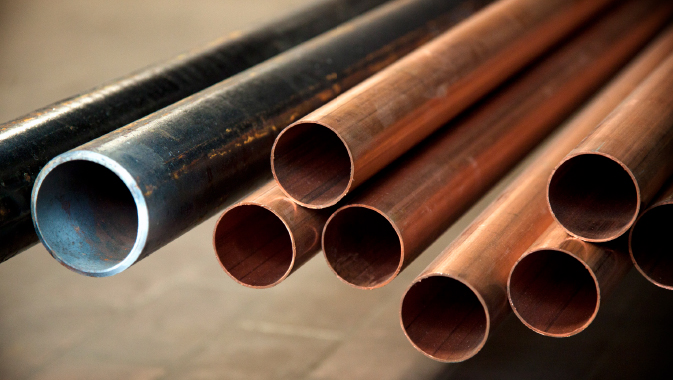Huckestein Mechanical Services, Inc. has a strong history of providing state-of-the-art, real world solutions to the challenges facing today’s businesses in terms of energy optimization, sustainability, and environmental awareness.
~
While green technologies and strategies have just recently garnered national attention and funding, the idea of energy savings and recovery is not new. Huckestein has built its reputation on designing and building HVAC systems using high efficiency equipment and innovative design for air recovery and handling, energy metering, and power monitoring to provide best value.
The company also services and maintains these systems to optimize efficiency and equipment longevity. Exploring and installing emerging renewable energy technology, such as geothermal, deepens Huckestein’s expertise and expands the options and services they offer to customers.
In partnership with Energy Service Companies (ESCO), over the past decade the company has designed and installed some $20 million of mechanical Energy Conservation Measures (ECM). Huckestein’s designers’ and engineers’ ability to right-size mechanical energy solutions has made them the contractor of choice for many ESCO companies, trusted to be their independent partner in delivering the best solution for the project at-hand.
ESCO projects differ from other renovation projects in that all aspects of the project are designed to save energy, and the savings from the various ECMs are guaranteed. Therefore, the price of every mechanical ECM designed and installed by Huckestein is fixed or the financial model doesn’t work. Wendy Staso, owner of the company since 2010, took this concept and has applied it to every design-build project the company performs.
Whether it’s an energy conservation measure (ECM), a capital improvement project, or a simple rooftop replacement, Huckestein believes that an integrated approach to designing and constructing projects leads to high quality, cost effective, and timely outcomes. Their in-house design, engineering, and installation team assures a seamless process, and a true one-stop shop for mechanical project accountability. When Huckestein commits to installing a project at a set price, they execute that project for that price without asking customers for change orders to cover errors, omissions, or “value added” changes.
Through this no-change order, design-build model, Huckestein delivers enhanced project quality, timely project delivery, and tightly managed, predictable costs. This is a major contrast with typical ways of working in the construction industry, and it is a direct result of the lean, efficient process required to work with ESCO companies.
This novel approach to designing and building mechanical renovation projects is just one of the innovations Ms. Staso has brought to Huckestein during her short tenure at the 70-year-old company. Another is the focus on service and preventive maintenance as the foundation for optimizing energy efficiency and reducing carbon footprint. On average, mechanical systems account for 60 percent of a facility’s energy consumption. Huckestein’s services and partnerships help more than 250 building owners reach the perfect balance between efficiency and costs.
Retrocommissioning (RCx) is another tool in the Huckestein toolbox. In a general sense, RCx is a tune-up of a building and its systems. Like any mechanical device, building systems lose efficiency and effectiveness over time. Additionally, in today’s complex buildings, systems are highly interactive with sophisticated control systems that can create a trickle-down effect on building operations – small problems have big effects on performance. No matter how well building operators maintain equipment, if it operates inefficiently or more often than needed, energy waste and reliability problems can occur.
A recent study reported simple payback time of .2 to 2.1 years for the costs associated with retro-commissioning, making it an affordable as well as beneficial investment. In 2011, during the course of retrocommissioning the physical plants at Soldiers and Sailors Memorial Hall (a Boiler Plant, Chiller Plant, AHU mechanical room, and Honeywell controls system), Huckestein uncovered serious deficiencies in the controls system sequence of operations and set point parameters, maintenance outages, indoor air quality concerns, duct limitations and draft issues that caused wasted energy. Huckestein remedied all deficiencies and was awarded a follow-on preventive maintenance contract to ensure building mechanical systems continue to operate at optimum efficiencies.
Most recently, Huckestein was privileged to work with People’s Gas on an exciting new natural gas technology, the combined heat and power (CHP) plant at the Energy Innovation Center (EIC) on Bedford Avenue. CHP is the production of both electricity and heat from a single fuel source. By using waste heat from onsite electricity production for heating, CHP increases fuel efficiency and decreases energy costs.
The plant integrates microturbines into EIC’s power system, and was commissioned in mid-July of this year. Microturbines are small, extremely efficient electricity generators that burn gas and liquid fuels. The microturbines in EIC’s CHP system will generate electricity and thermal energy in a single process. The heat that would normally be wasted will actually be recovered, avoiding energy loss from separate generation. In the EIC system, the microturbines will burn waste gases from electricity generation—which would otherwise be released into the atmosphere—to power the building’s hot water system. While conventional methods of producing heat and power separately have a typical combined efficiency of around 40 percent, this CHP system is projected to work at closer to 80 percent efficiency.
Energy efficiency has been the catalyst for transforming Huckestein, an aging company in a very old industry, into a thriving small business that has doubled in revenue and employment since their lowest point in 2011. Some 50 families depend on them for their livelihood, and that number is growing. When she assumed ownership, Ms. Staso knew that Huckestein could provide energy consumption reduction to customers and had the employee talent to capitalize on the market. With laser-like focus and out-of-the-box thinking, the company plans to continue to be at the forefront of mechanical system energy innovation.













